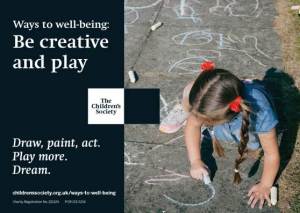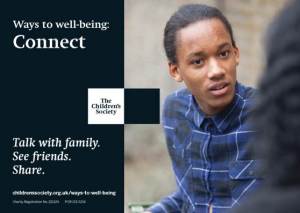Improving the wellbeing of children and young people: Evidence from The Children’s Society and NEF
Ways to wellbeing for children and young people.
What types of activities improve children’s wellbeing? At The Children’s Society, a charity focused on improving the lives of disadvantaged children, we have an in depth understanding through our frontline work and research of what helps to make children and teenagers happy. However, knowledge about the subjective wellbeing of children is limited. How do they see their own wellbeing? The best way for us to find this out was of course to ask children themselves.
To take our research into subjective wellbeing a step further we teamed up with NEF. NEF’s understanding of the things that adults can do to improve their own wellbeing was a great starting point. Would the list of activities that children can do to improve their own wellbeing be similar or different?
Our research covered two main areas:
- A quantitative survey, where we asked 1,500 children aged 10 to 15 about both their levels of subjective wellbeing and the time they spend on various activities related to the ‘five ways’ activities that NEF had produced for adults (connect, be active, keep learning, take notice, give).
- Qualitative research in the form of eleven focus groups, where we spoke to about 90 children about activities which might be linked to a sense of wellbeing, and about how they felt about different activities. The purpose of this was two-fold: to check we had not missed anything that was important to children and young people through open-ended questions, and to understand how the activities contributed to the children’s wellbeing in particular.

One of the most striking things to come out of the research was that one of the most important ways to wellbeing for children and young people was an entirely new and different category than to adults. For children, being creative and playing was really important.
They told us that using their imagination and having time to simply play and have fun made a huge difference to their everyday.
 Children also talked about the importance of ‘giving’ in a different way to adults. Whilst for adults, giving may be quite formal, for instance through volunteering, for children it’s the small gestures that count. Giving a picture they have drawn to a family member or teaching others how to dance were examples of things that made them feel happy.
Children also talked about the importance of ‘giving’ in a different way to adults. Whilst for adults, giving may be quite formal, for instance through volunteering, for children it’s the small gestures that count. Giving a picture they have drawn to a family member or teaching others how to dance were examples of things that made them feel happy.

Apart from these two findings, we found that overall, the things that children and young people do that correlate with higher levels of wellbeing (learning, leisure activities, friendships, helping and being aware) broadly match the five ways to wellbeing proposed by NEF – although as we’ve mentioned here, how children see these areas can differ.
Based on this research, we have published our ‘ways to well-being’ report, which discusses these findings in great detail. We have also created online postcards for children and young people of the things that might help them increase their well-being, and a parenting guide. We are hoping that this will enable children to know what they themselves can do to improve their wellbeing, and enable parents, guardians and carers to support them in this.
 Of course, there are many other factors that influence the wellbeing of children and young people – our research findings around ways to wellbeing relate closely to other things we already know about the wellbeing of children and young people, such as the importance of autonomy, or the decline of wellbeing as children and young people get older – and we’ll continue working on a better understanding of the wellbeing of children and young people. But for now, our ‘Ways to wellbeing’ with NEF is a good starting point to support children and young people across the country.
Of course, there are many other factors that influence the wellbeing of children and young people – our research findings around ways to wellbeing relate closely to other things we already know about the wellbeing of children and young people, such as the importance of autonomy, or the decline of wellbeing as children and young people get older – and we’ll continue working on a better understanding of the wellbeing of children and young people. But for now, our ‘Ways to wellbeing’ with NEF is a good starting point to support children and young people across the country.

